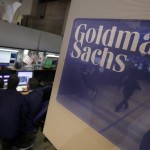Yesterday’s trade saw GBP/USD within the range of 1.5001-1.5191. The pair closed at 1.5180, surging 1.15% on a daily basis, or the most since December 3rd, when it appreciated 1.30%. It has been the first gain in the past four trading days. The daily high has been the highest level since November 23rd, when a high of 1.5197 was registered.
At 7:30 GMT today GBP/USD was up 0.01% for the day to trade at 1.5183. The pair touched a daily high at 1.5195 during early Asian session, undershooting the daily R1 level.
Today GBP/USD trading may be influenced by a number of macroeconomic reports and other events as listed below.
Fundamentals
United Kingdom
Balance of Trade
The deficit on United Kingdom’s goods trade balance probably expanded to GBP 9.70 billion in October, according to market expectations, from a deficit figure of GBP 9.35 billion during the preceding month. The latter has been the lowest trade deficit since June 2015, when a gap of GBP 9.184 billion was reported.
This indicator is also known as visible trade balance, because it reflects the difference in value between exported and imported physical goods, without the inclusion of exported and imported services. Since UK economy is to a great extent dependent on trade, the visible trade balance is considered as a key factor, providing clues over the sustainability of economic growth.
The gap on the nations total trade balance narrowed to GBP 1.353 billion in September from a revised down GBP 2.9 billion deficit posted in August. The September deficit was mostly attributed to a surge in goods exports and a decrease in goods imports.
In September, total exports went up by GBP 0.6 billion (or 1.3%) to reach GBP 42.7 billion, with all of the increase attributed to goods, specifically chemicals (up GBP 0.6 billion) and finished manufactures (up GBP 0.4 billion), according to the report by the Office for National Statistics (ONS). UK imports shrank by GBP 1.0 billion (or 2.2%) to reach GBP 44.0 billion during the same month. The decline reflected a GBP 0.1 billion drop in the import of services and a GBP 0.9 billion drop in the import of goods.
In case the UK trade deficit expanded more than anticipated, this would have a moderate bearish effect on the sterling, because of the negative implications regarding the nations GDP. The Office for National Statistics will publish the official trade data at 9:30 GMT.
Bank of England policy decision
At 12:00 GMT Bank of England is to announce its decision on monetary policy. The benchmark interest rate (repo rate) will probably be left unchanged at the record low level of 0.50%. The rate has been at that level since BoEs policy meeting on March 5th 2009. The repo rate applies to open market operations of the central bank with other banks, building societies, securities firms etc.
At the same time, the pace of BoE’s monetary stimulus will probably be left without change as well, at GBP 375 billion. The asset-purchasing programme, financed by the issuance of central bank reserves was initiated on March 5th 2009, while the scale of this programme was increased by GBP 50 billion to the current GBP 375 billion on July 5th 2012.
The minutes from the Banks policy meeting held in November revealed that 8 members of the Monetary Policy Committee voted in favor of keeping borrowing costs intact, while 1 member voted in favor of a rate hike. In addition, all 9 members voted unanimously in favor of keeping the stock of purchased assets without change. BoE policy makers revised down the forecasts on UK inflation and economic growth, while noting that outlook for global growth has weakened. The Bank now projects that UK economy will expand 2.7% in 2015 and 2.5% in 2016, while boosting its forecast for 2017 to a 2.7% growth. In addition, the central bank projects that the annual rate of inflation will stay below 1% until the second half of 2016 and will accelerate to 2.1% in Q3 2017.
According to extracts from the Banks Monetary Policy Statement, released in November: ”The outlook for inflation reflects the balance between persistent drags from factors such as sterling and world export prices, and prospective further increases in domestic cost growth. The MPC’s objective is to return inflation to target sustainably; that is, without an overshoot once persistent disinflationary forces ultimately wane. Given these considerations, the MPC intends to set monetary policy to ensure that growth is sufficient to absorb remaining spare capacity in a manner that returns inflation to the target in around two years and keeps it there in the absence of further shocks.”
”Robust private domestic demand is expected to produce sufficient momentum to eliminate the margin of spare capacity over the next year. Domestic cost pressures are expected to build as a result of a pickup in wage growth relative to productivity growth. CPI inflation is nonetheless expected to remain below 1% until the second half of next year, reflecting the continuing drag from commodity and other imported goods prices. Beyond that, the dampening influence of sterling’s past appreciation on inflation is expected to be persistent, diminishing only slowly over the MPC’s forecast period. In this context, the MPC judges it appropriate to return inflation to the target in around two years.”
”…there is a range of views among MPC members about the balance of risks to inflation relative to the best collective judgement presented in the November Report. At the Committee’s meeting ending on 4 November, the majority of MPC members judged it appropriate to leave the stance of monetary policy unchanged at present. Ian McCafferty preferred to increase Bank Rate by 25 basis points, given his view that the path of domestic costs was more likely to lead to inflation exceeding the target in the medium term than was embodied in the Committee’s collective November projections.”
United States
Initial, Continuing jobless claims
The number of people in the United States, who filed for unemployment assistance for the first time during the business week ended on December 4th, probably remained steady at 269 000, according to market expectations. In the business week ended on November 20th 260 000 claims were reported, or the lowest number since the week ended on October 23rd.
The 4-week moving average, an indicator lacking seasonal effects, was 269 250, marking a decrease by 1 750 compared to the preceding weeks unrevised average.
The business week, which ended on November 27th has been the 39th consecutive week, when jobless claims stood below the 300 000 threshold, which implied a healthy labor market.
Initial jobless claims number is a short-term indicator, reflecting lay-offs in the country. In case the number of claims met expectations or dropped further, this would have a moderate bullish effect on the US dollar.
The number of continuing jobless claims probably dropped to the seasonally adjusted 2 152 000 during the business week ended on November 27th from 2 161 000 in the preceding week. The latter represented an increase by 6 000 compared to the revised down number of claims reported in the week ended on November 13th. This indicator reflects the actual number of people unemployed and currently receiving unemployment benefits, who filed for unemployment assistance at least two weeks ago.
The Department of Labor is to release the weekly report at 13:30 GMT.
Import and Export prices
Prices of imported goods in the United States probably fell for a sixth consecutive month in November, going down at a monthly rate of 0.7%, according to market expectations. In October import prices were 0.5% lower from a month ago, driven by a 2% decline in fuel import prices and a 0.3% dip in non-fuel prices. In annual terms, prices were 10.5% lower in October, which has been the 15th consecutive month of decline. Generally, lower import prices of goods suggest lower rates of consumer inflation and a lesser probability of a rate hike.
Prices of exported goods from the United States probably decreased for a sixth consecutive month in November, falling at a monthly rate of 0.3%. In October export prices were 0.2% lower from a month ago, as agricultural export prices ticked down 0.1%, while prices of non-agricultural goods fell 0.3%, driven by non-fuel industrial supplies and materials, foods, feeds, beverages, automotive vehicles and capital goods. In annual terms, export prices slumped 6.7% in October, or for a 14th month in a row. Lower prices of exported goods generally bolster demand abroad, and as US trade accounts for 20% of international trade relations, this also tends to be dollar positive.
The Department of Labor is expected to release the official numbers at 13:30 GMT.
Monthly Budget Statement
The United States probably recorded a government budget deficit of USD 68.0 billion in November, according to market expectations, after a budget gap of USD 136.0 billion during the previous month. The latter represented an 11.47% increase compared to the figure posted in October a year ago.
In October total receipts were at USD 211 billion (a 0.9% year-on-year drop), while total outlays amounted to USD 348 billion (a 4.8% year-on-year surge), according to the report by the US Treasury. October outlays for defense were at the amount of USD 60 billion, up from USD 55 billion in September, while outlays for Medicare amounted to USD 74 billion in October, up from USD 45 billion in the prior month.
A larger-than-projected budget deficit in November would have a moderate bearish effect on the greenback. The Financial Management Service is to publish the official figure at 19:00 GMT.
Bond Yield Spread
The yield on UK 2-year government bonds went as high as 0.636% on December 9th, after which it closed at 0.595% to add 1.2 basis points (0.012 percentage point) compared to December 8th. It has been the first gain in the past four trading days.
The yield on US 2-year government bonds climbed as high as 0.955% on December 9th, after which it closed at 0.923% to lose 1.2 basis points (0.012 percentage point) compared to December 8th. It has been the 5th drop in the past 18 trading days.
The spread between 2-year US and 2-year UK bond yields, which reflects the flow of funds in a short term, narrowed to 0.328% on December 9th from 0.352% on December 8th. The December 9th yield spread has been the lowest one since December 4th, when the difference was 0.292%.
Meanwhile, the yield on UK 10-year government bonds soared as high as 1.896% on December 9th, after which it slid to 1.864% at the close to add 4.6 basis points (0.046 percentage point) compared to December 8th. It has been the first gain in the past three trading days.
The yield on US 10-year government bonds climbed as high as 2.271% on December 9th, after which it slipped to 2.216% at the close to lose 0.006 percentage point compared to December 8th. It has been the 13th drop in the past 18 trading days and also a third consecutive one.
The spread between 10-year US and 10-year UK bond yields narrowed to 0.352% on December 9th from 0.404% on December 8th. The December 9th yield difference has been the lowest one since December 4th, when the spread was 0.344%.
Daily and Weekly Pivot Levels
By employing the Camarilla calculation method, the daily pivot levels for GBP/USD are presented as follows:
R1 – 1.5197
R2 – 1.5215
R3 (range resistance) – 1.5232
R4 (range breakout) – 1.5285
S1 – 1.5163
S2 – 1.5145
S3 (range support) – 1.5128
S4 (range breakout) – 1.5076
By using the traditional method of calculation, the weekly pivot levels for GBP/USD are presented as follows:
Central Pivot Point – 1.5055
R1 – 1.5217
R2 – 1.5322
R3 – 1.5484
S1 – 1.4950
S2 – 1.4788
S3 – 1.4683





